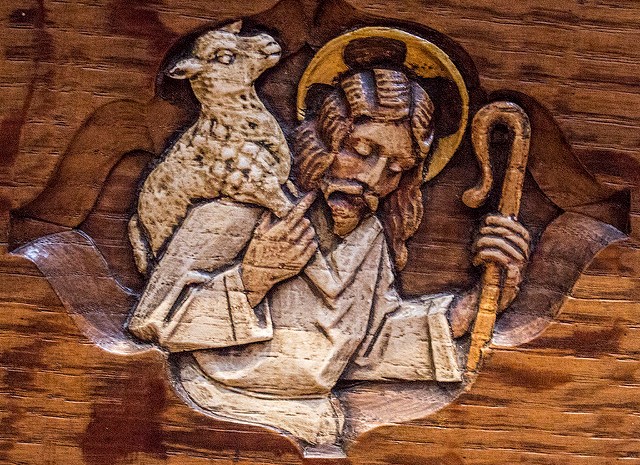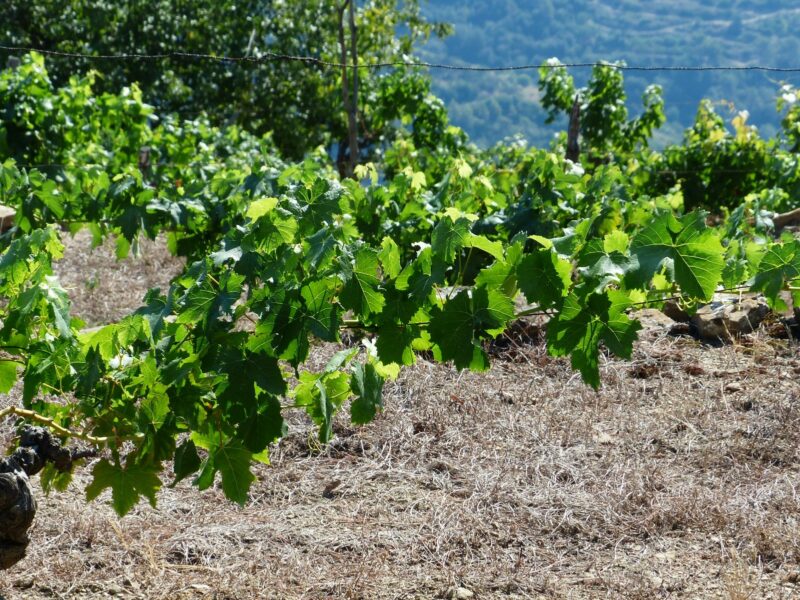
Jesus: The Good Shepherd
Fourth Sunday of Easter. fr Fabian Radcliffe explains how Jesus is the Good Shepherd.
The Fourth Sunday of Easter is sometimes called Good Shepherd Sunday. Each year the Gospel reading is taken from St John chapter 10, where Jesus speaks of himself as the Good Shepherd.
Sheep farming was a regular part of life in Palestine, which is why sheep and shepherds are a frequent image in both Old and New Testaments. For example, we probably all know the Psalm, ‘The Lord is my shepherd’, and the hymn based on it. And there are Jesus’s comforting words: ‘Fear not, little flock, for it is the Father’s good pleasure to give you the Kingdom’. There is also Jesus’s parable describing the Final Judgment as the separation of the sheep from the goats. Perhaps we don’t know much about the actual work of shepherds or the character of sheep, even in this country, let alone in Palestine. But to know something about it helps to grasp what Scripture is saying.
For some people, the image of Jesus as the Good Shepherd may come from pictures in children’s books or in stained glass windows: Jesus as a benign shepherd in long flowing robes, surrounded by cuddly lambs and golden-haired children in a soft grassy field. It’s a sentimental picture, and quite unlike the reality of both shepherds and sheep. In real life, shepherding is always hard work, often boring and sometimes dangerous and risky. And though the sheep themselves produce valuable meat and wool, they are often stubborn and difficult to handle. It certainly implies no compliment to us when Scripture calls us ‘the sheep of God’s pasture’.
There is a big difference between shepherding in Britain and in Palestine. Here the sheep are left to graze in large enclosures: fields or wide expanses of moorland. They don’t need a shepherd with them all the time. But in Palestine there are no enclosed areas for grazing, and good pasture may be less plentiful than here. During the day, sheep are taken to wherever there is fodder, and they are led there by the shepherd and his assistants, often children. This is as true today as it was in Jesus’s time. The shepherd needs to spend the entire day looking after his flock, wherever they may be. A few years ago, in Lebanon, I even saw some sheep grazing on the grassy strip between the two lanes of a dual carriageway. No wonder they need constant attention! For just one sheep to stray away from the flock may be disastrous for all.
At night the sheep stay in the village in a sheepfold, a walled enclosure supervised by a doorkeeper. In the morning the shepherds come to take their flocks, and the doorkeeper opens the door to them. They each call their own sheep, and lead them out to pasture on the hills. As Jesus says in the earlier part of this chapter, ‘The sheep follow because they know his voice … they do not recognise the voice of a stranger’. Anyone who tries to get in among the sheep in any other way than through the door must have dishonest motives. He would be ‘a thief and a brigand’.
The role of ‘doorkeeper’ in Scripture is used as an image of the leaders of Israel, who should be welcoming the One who owns the sheep, the only One who can give them true pasture. But, as we know, the leaders of Israel did not accept Jesus’s claim. They did not see him as the true Shepherd. So Jesus uses another image by saying: ‘I am the door for the sheep’. He is the one sure route by which the sheep ‘may have life, and have it to the full’. The door controls the path by which the sheep can find good nourishment throughout the day, as well as the path which leads them back to safety against the dangers of darkness.
It is only after he has said this that Jesus goes on to speak of himself as the Good Shepherd. His goodness is shown by contrast to the ‘hired hand’, who does not own the flock and has no commitment to it. So when he sees the wolf coming he runs away, leaving the flock unprotected. The prophet Ezekiel in the Old Testament has some very severe criticisms of selfish shepherds who feed themselves but leave the sheep to starve.
In contrast, Jesus says that he himself is the Good Shepherd. He knows his sheep and his sheep know him. He not only leads them to nourishing pasture; he will also protect them from mortal danger, even to the extent of laying down his own life. He knows his sheep and his sheep know him. And, he says, his gift to them is eternal life, so it is clear that he is not talking about sheep farming but about his relationship to us and ours to him.
What stands out in all this is that it speaks far more about the Shepherd than about the sheep. It gives us the assurance that Jesus our Shepherd can be relied on to give us all the nourishment we need. But it links this with his self-sacrifice – laying down his life for the sheep – by his death on the cross. The quite elaborate imagery of the shepherd, the sheep, the door and the pasture speak to us of God’s self-sacrificing love in Jesus, which surrounds us continually with nourishment and protection.
Acts 13:14,43-52 | Apocalypse 7:9,14-17 | John 10:27-30
The image above is from the stalls of the Thisle Chapel in Edinburgh’s St Giles Cathedral.
Sorry, the comment form is closed at this time.



A Website Visitor
Very good homily which gives us a deeper understanding of Jesus love for each one of us, no matter how stupidly we behave. At the same time, Fr. Fabian, without explicitly referring to it, is telling us of the importance of listening to Our Lord carefully and making sure it is His voice we are hearing and not the voice of false prophets. Thank you very much. S.vS (Uruguay)
A Website Visitor
In real life in Scotland the sheep need feeding in harsh winters. They know the shepherd because he is the person who feeds them. Re the character of sheep – not too bright. They will also go with whoever feeds them. Loyalty is not a characteristic. Re the character of a shepherd – solitary & reliable, wholly dedicated. I know these things because my father’s cousin was a shepherd & he came from a long line of shepherds. We talk about our past. The qualities I understand from the shepherd and sheep images are those of a caring parent , nurturing & providing for children.
A Website Visitor
Thank you so much. I learned lots about Palestine shepherding, but what eabout ‘While shepherds watched their flocks by night all seated on the ground?
A Website Visitor
Thank u Father for your inspiring homilies. It would be more helpful for the people of India if u could also mail Hindi translated reflection .